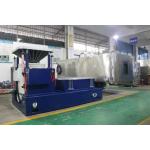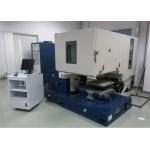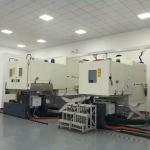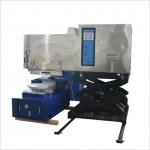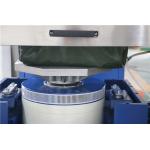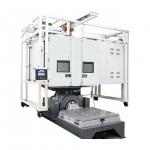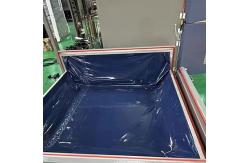In the world of manufacturing, the reliability and longevity of
plastic parts are non-negotiable. The HALT HASS & AGREE
Vibration Test Chambers, purpose-built for the NES M0132 Thermal
Cycle Test of “NTC-1-5A” plastic parts, stand as a paragon of
precision and innovation in ensuring the highest quality of these
components. This advanced vibration test chamber is dedicated to subjecting
“NTC-1-5A” plastic parts to the comprehensive NES M0132 thermal
cycle testing regimen. It serves a diverse clientele, including
automotive, aerospace, electronics, and consumer goods
manufacturers. The core objective is to meticulously evaluate the
ability of these plastic parts to endure the rigors of repeated and
extreme temperature changes, combined with the added stress of
vibration. By faithfully replicating the real-world and accelerated
conditions that plastic parts may face during their operational
lifespan, manufacturers can identify and rectify potential
weaknesses, optimize material formulations and manufacturing
processes, and ultimately enhance the overall durability and
performance of their products. - Tailored Chamber Design for Plastic Part Testing
- The chamber is constructed with dimensions and an interior layout
that are optimized to house the specific “NTC-1-5A” plastic parts.
The walls are fabricated from high-strength, thermally stable
materials that provide excellent insulation and durability. The
door is engineered with a precision sealing mechanism and a large
viewing window, allowing operators to closely monitor the testing
process without perturbing the internal environment. The interior
is equipped with adjustable racks and fixtures, ensuring proper
positioning and uniform exposure of the plastic parts to both
thermal cycling and vibration.
- Precision Temperature and Vibration Control Systems
- Temperature Cycling Capability: The chamber can achieve a wide
temperature range, typically from -40°C to +120°C, with an accuracy
of ±0.3°C. It is furnished with a high-performance refrigeration
unit and powerful heating elements, coordinated by a sophisticated
control algorithm and multiple temperature sensors. This enables
the chamber to execute precise and rapid temperature cycling,
replicating the harsh thermal environments that plastic parts may
experience, such as in extreme weather conditions or near heat
sources.
- Vibration System: The chamber is outfitted with a high-precision
vibration platform that can generate a wide spectrum of vibration
frequencies and amplitudes. It can produce vibrations from 5 Hz to
2000 Hz with amplitudes up to 50 mm. The vibration system is
designed to mimic various real-world vibration sources, including
machinery vibrations, transportation-induced jolts, and the dynamic
forces associated with product usage. The vibration control system
offers remarkable accuracy, allowing for the programming of complex
vibration profiles and real-time adjustments.
- Intuitive Control Panel and Data Acquisition Interface
- The control panel is crafted for user-friendliness, affording
operators effortless access to all test parameters. They can
readily set and adjust temperature limits, cycling times, vibration
frequencies, amplitudes, and test durations. The panel also
presents real-time information regarding the current temperature,
vibration status, and any alarms or warnings. The chamber is
integrated with a comprehensive data acquisition system that
records all pertinent test data. This encompasses temperature
histories, vibration waveforms, and any observable changes in the
physical or mechanical properties of the plastic parts. The data
can be stored in a built-in memory or exported to external storage
devices for in-depth analysis. The system is also capable of
generating detailed test reports in various formats.
- Safety Features and Alarms
- To safeguard operators and the integrity of the testing process, a
suite of safety features is incorporated. These include
over-temperature and over-vibration protection systems, emergency
stop buttons, and alarms for abnormal temperature fluctuations,
vibration malfunctions, or any other equipment failures. The
chamber is also equipped with proper ventilation and exhaust
systems to handle any potentially harmful gases or vapors that may
be emitted from the plastic parts during thermal cycling and
vibration testing.
- Temperature Range and Accuracy
- The -40°C to +120°C temperature range with ±0.3°C accuracy offers a
comprehensive and precise testing environment. This wide range
allows for the evaluation of plastic parts' performance under both
extremely cold and hot conditions. Different plastic materials have
varying glass transition temperatures and thermal expansion
coefficients, and this accurate temperature control ensures that
the test conditions are precisely maintained, providing reliable
and repeatable results.
- Vibration Parameters
- The vibration system's ability to produce frequencies from 5 Hz to
2000 Hz and amplitudes up to 50 mm provides a thorough assessment
of the plastic parts. Low-frequency vibrations can mimic the slow
oscillations of a product during storage or transportation, while
high-frequency vibr
|
